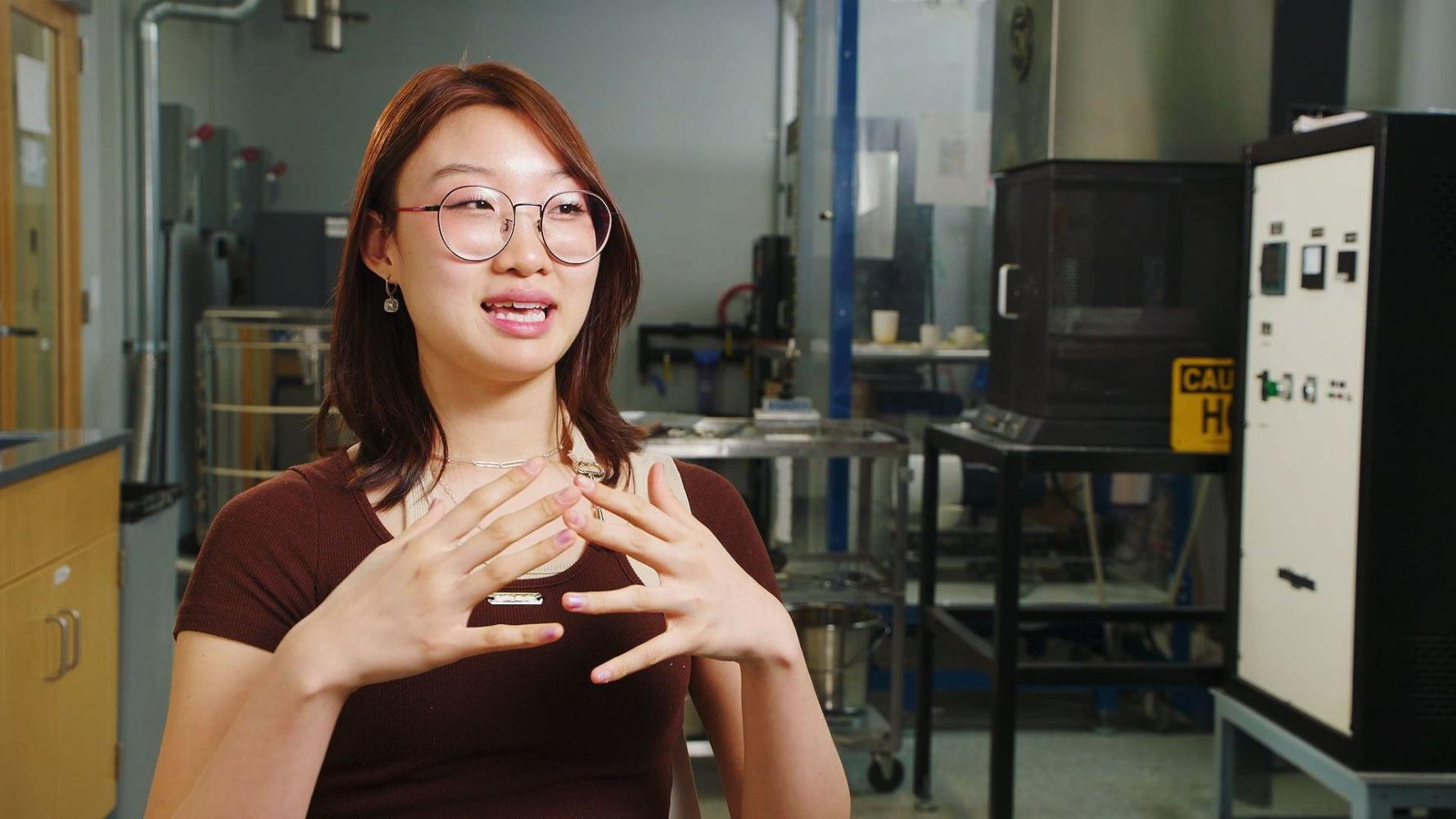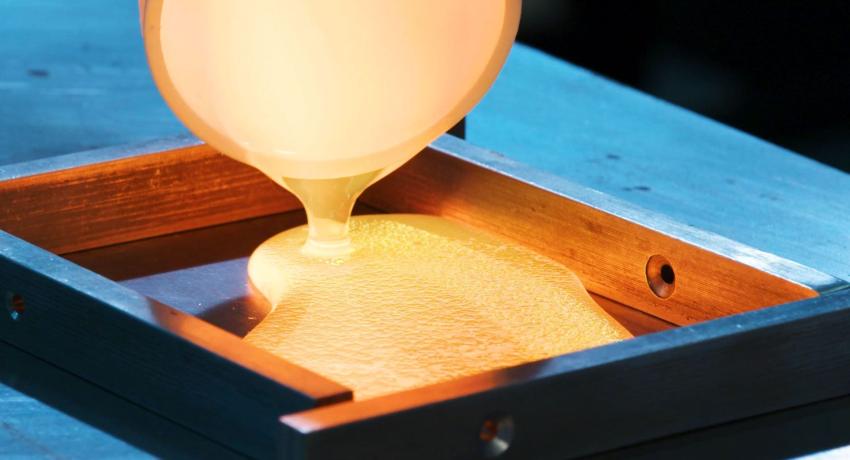Close-up photo of LionGlass
Fired by philanthropy, a new kind of glass holds promise for the future
From the screen on your phone to the windshield on your car, from the windows on our homes to the jars in our cupboards, we live in a world made of glass. And we know the frustration—even the danger—when that glass shatters. What we may not know is the impact of glass on our planet as well as our lives. Worldwide, the glass industry produces about 86 million tons of carbon dioxide each year. That may be about to change, though, thanks to a Penn State research team that has discovered how to make a ten-times stronger product—known as LionGlass—that is lighter than conventional glass, with a lower carbon footprint for both its manufacturing and transportation. The secret ingredient? Philanthropy.
“The generosity of our donors played a key role in LionGlass research,” says John Mauro, the lead investigator on the project. As the Dorothy Pate Enright Professor in the Department of Materials Science and Engineering, Mauro has been able to continue the pioneering work he began at Corning Incorporated, where he co-invented the industry standard Gorilla Glass. At Penn State’s College of Earth and Mineral Sciences, he is pursuing an even bolder ambition.
“Our goal is to make glass manufacturing sustainable for the long term,” he says. “LionGlass eliminates the use of carbon-containing batch materials and significantly lowers the melting temperature of glass.” Those changes alone cut carbon emissions by more than half compared to conventional glass, with further reductions downstream because lighter glass requires less fuel to transport.
Resources from his endowed professorship have helped Mauro to accelerate his research and engage not only graduate students but also undergraduates as members of his team. “Undergraduate research is so important because, frankly, that is why we are here as a university,” he says. “Research is a key part of that education. The best way for people to learn is to participate in that research. Students today don’t just want to get a good career. They want to have a positive impact on our world, on our society. And those students are inspiring to me as a professor.”
Senior Julia Chen is one of those students. Her journey to the LionGlass lab began in Los Angeles, where she grew up in a household of nine living just above the poverty line. With a talent for math and science, she applied to Penn State but found she couldn’t afford University Park. She spent two years at Penn State Berks, where she served as a mentor encouraging middle schoolers to explore STEM careers through Futures in Engineering: Role-models Can Empower (FiERCE). Last fall, she transitioned to Happy Valley with the help of scholarships.

“Being able to go to college and having this support is kind of mind-blowing to me. I always thought that I had to be working two jobs to be able to afford my tuition, afford to eat, afford my dorm. I feel like with philanthropy, I’ve been able to have the traditional college experience where I could just be a student.”
—Julia Chen
Now a Schreyer Scholar majoring in materials science and engineering, Chen has found a passion for her field through her research in Mauro’s lab. “It’s revolutionary because we’re getting rid of carbon emissions. We’re making the world a better place, and much more healthy and sustainable for the future,” she says. “Through this LionGlass project, I discovered materials science and engineering. I feel like LionGlass just gave me the medium to be able to understand what I want to do in life.”
That’s the kind of experience that Lee Kump, the John Leone Dean in the College of Earth and Mineral Sciences, aims to create when he directs resources from his endowed position to research efforts like LionGlass. “When I think about the great things that we’re able to do at Penn State for our students and the impact for society, I often think about philanthropy because those gifts and endowments generate revenue that can provide the seed for new research,” says Kump. “It can support our students and help them get engaged in that research. It really is the difference maker.”
Since LionGlass first made headlines last summer—when it was celebrated by the World Economic Forum, among others—Mauro and his team have been building partnerships with corporations around the globe and learning more about LionGlass’s properties and potential. They’re patenting a whole family of glass related to LionGlass, and they’re testing it for real-world applications.
“Humans learned how to manufacture glass more than 5,000 years ago, and since then it has been critical to bringing modern civilization to where it is today,” Mauro says. “Now, we are at a point in time when we need it to help shape the future, as we face global challenges such as environmental issues, renewable energy, energy efficiency, health care, and urban development. Glass can play a vital role in solving these issues, and we are ready to contribute.”

